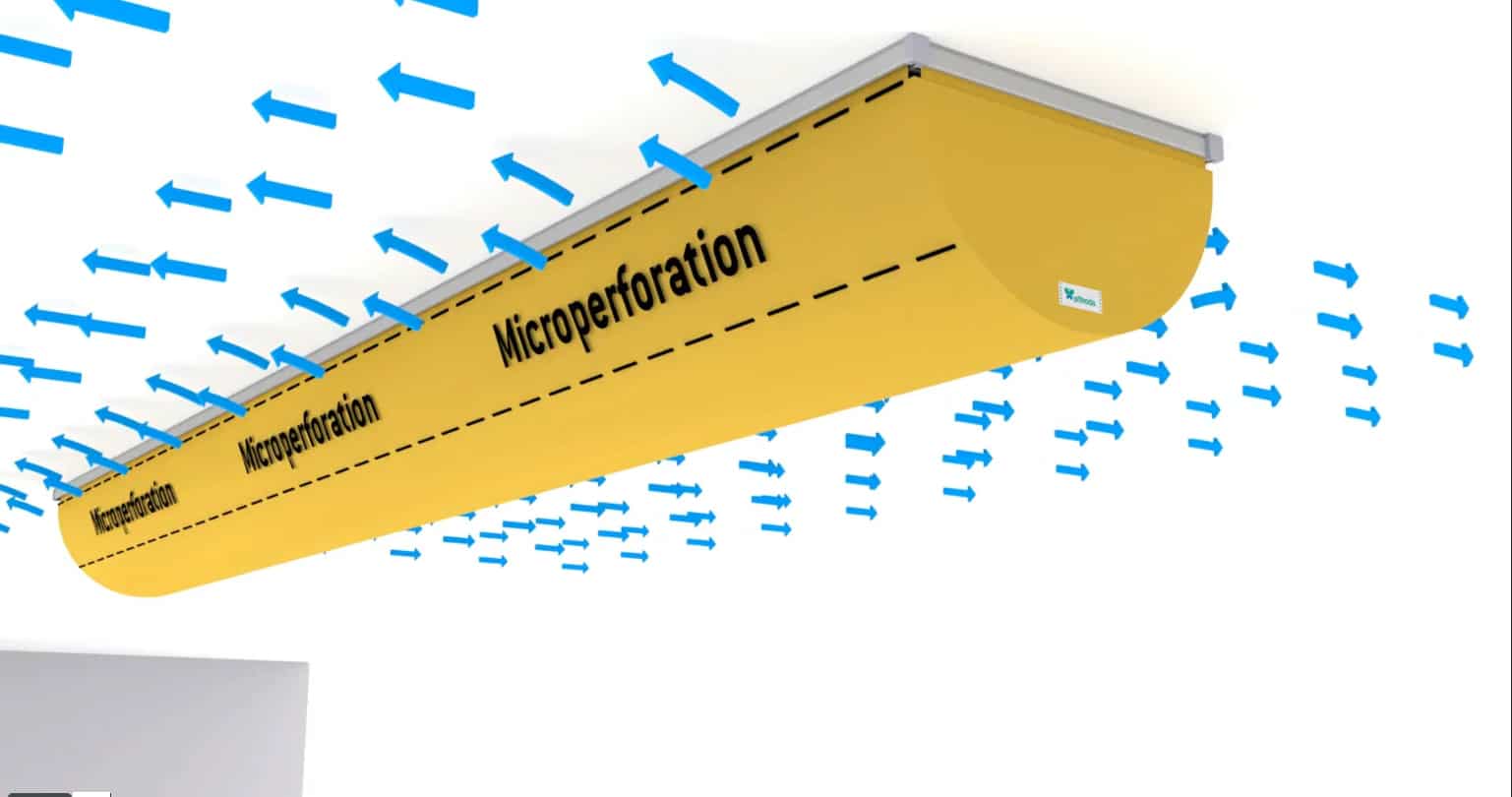What is Displacement Ventilation?


What is Displacement Ventilation?
Displacement Ventilation introduces supply air into a room at low velocity and usually at low level. The air volume of a displacement system is usually quite high in comparison with mixing systems and the supply air temperature difference usually quite small (typically no more than 4k). The idea being that a high air change rate will fill the volume of the space quickly. Thus creating a roughly even temperature gradient from top to bottom of the space.
How is this achieved?
The supply air arrives at a heat source such as a person, computer etc and is entrained into the rising air pattern caused by the warming of the ambient air around the heat source. Usually this warm air is collected at high level by the extract system. This is a typical description but it doesn’t describe all of the possibilities.
Fabric ducting is often used as a displacement system when installed in food production applications, where they are called air socks. The air socks are actually installed at high level on the ceiling of the room and deliver air at very low velocity. The cold air falls under its own density into the occupied zone. This combined with high air change rates (usually to overcome quite high heating loads) creates a classic displacement system. But with high level ducts – fabric ducting / air socks are the only diffusers that can achieve this ventilation strategy of displacement ventilation using high level diffusers whilst cooling.
Prihoda diffusers use micro-perforations (small 0.2mm diameter laser cut holes) to achieve a very accurate diffusion rate. They also allow us to direct this low velocity air by cutting patterns of micro-perforations on different sides of the duct. The micro-perforations also ensure that material doesn’t become blocked with dust too quickly).
For more information, please have a look here.
Looking for more information?
Our experts are on hand to answer any questions. Why not give us a call or drop us a message, We’ll work with you to find the right solution.
Contact us

